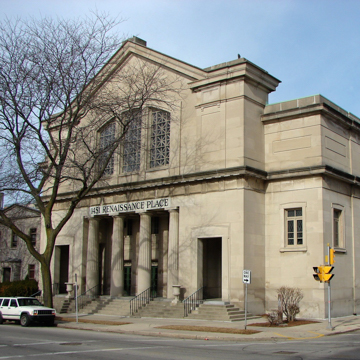A fire in 1907 destroyed a nearly completed version of this Christian Scientist Church. Beman’s design took its meticulous proportioning and careful detailing from classic Roman architecture. The symmetrical facade, faced with smooth limestone, is dominated by a wide, projecting pavilion with a recessed portico and a return cornice topping the gable. Fluted Doric columns echo Greek forms, whereas the large arched window above the entrance is Roman. Inside, the vast meeting hall has classical vaulting and Ionic columns.
Christian Scientists typically chose secular styles to differentiate their buildings from the churches of mainstream religious bodies. The rational architecture of the ancient world suited church members who perceived Christian Science as an intellectual movement. As a convert to Christian Science, Beman designed other Christian Science churches in Chicago, New York, and elsewhere, and in 1906, he was adviser on the design of the Christian Scientists’ Mother Church in Boston. This Christian Science congregation has disbanded. In the 1980s, the church was converted into a private conference center.


